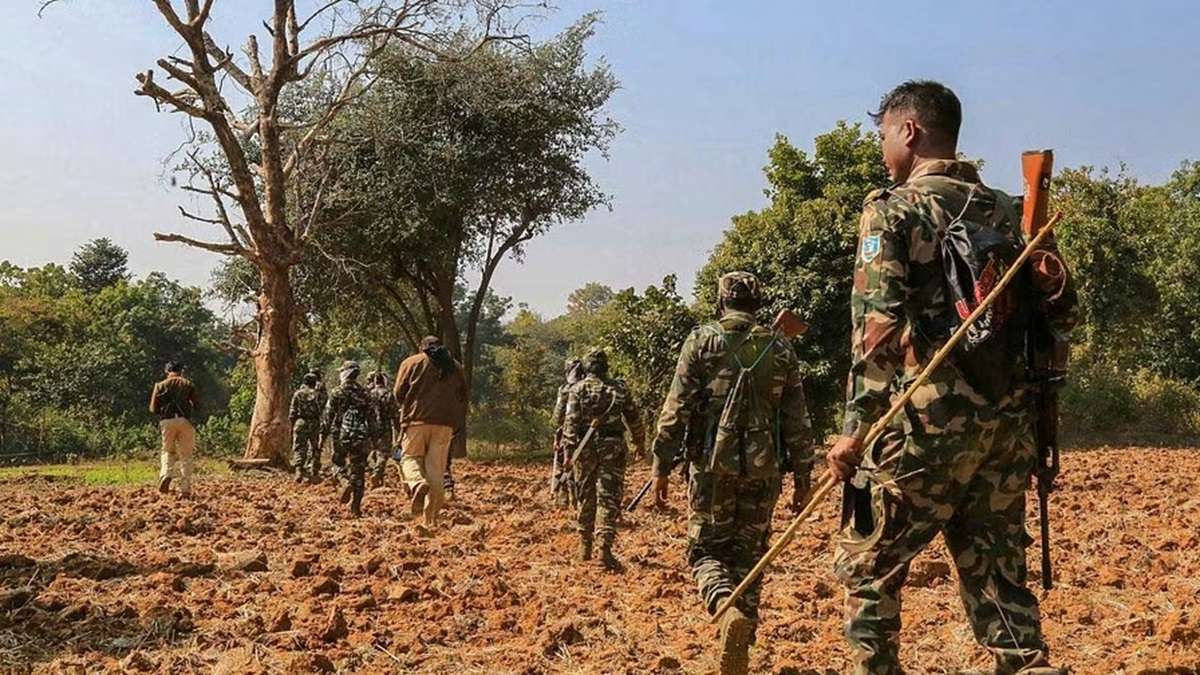In a decisive blow to the Maoist insurgency, security forces have killed 22 Naxals in a high-intensity encounter near Karegutta Hills in Bijapur district, located along the volatile Chhattisgarh-Telangana border. The operation, part of the massive anti-Naxal campaign codenamed “Mission Sankalp,” is being hailed as one of the largest and most coordinated offensives against Left-Wing Extremism in India’s history.
Launched on April 21, 2025, the mission involves more than 24,000 personnel from elite forces such as the District Reserve Guard (DRG), Bastar Fighters, Special Task Force (STF), Central Reserve Police Force (CRPF), and CoBRA commandos. As of today, the total number of Naxals killed in the operation stands at 22 — a steep rise from initial reports of 15 earlier in the day — indicating the encounter is still active and evolving.
Karegutta Hills, rising 5,000 feet above sea level and long considered a bastion of Maoist activity, especially for the notorious PLGA Battalion No. 1, was stormed by security forces in late April. On April 30, the Indian tricolour was triumphantly hoisted on the peak, symbolizing a strategic and psychological victory.
The battalion, linked to the 2010 Tadmetla massacre where 76 CRPF personnel lost their lives, has been a prime target of the mission. Intelligence inputs suggest the possible presence of high-ranking Maoist leaders, including Hidma Madvi, Damodar, and CPI (Maoist) General Secretary Nambala Keshava Rao alias Basavaraj, who carries a bounty of Rs 1 crore.
The terrain, comprising dense forests and rugged cliffs spread over 60 km, has posed logistical challenges, but forces have made significant gains, including the neutralization of over 100 IEDs planted by retreating Naxals. An additional 500 commandos were airlifted to reinforce ground units as operations expanded to neighboring hill zones with an estimated 250 Naxals still active.
The government, led by Union Home Minister Amit Shah, has committed to making India “Maoist-free” by March 31, 2026, underlining the political will behind Mission Sankalp.
However, the mission has not been without controversy. Tribal rights groups have called for a ceasefire and dialogue, appealing to President Droupadi Murmu, citing humanitarian concerns. Meanwhile, a rare ceasefire proposal by Maoist spokesperson “Abhay” has sparked fresh debate on whether peace talks should be considered.
Local leaders in Telangana have also criticized the scale of the offensive, even as political leaders in Chhattisgarh strongly defend the mission, questioning the motivations of activists opposing it.
With key Maoist strongholds being dismantled and the insurgency’s leadership cornered, security forces are treating this as a watershed moment. The nation now watches closely as Mission Sankalp unfolds — a mission that could redefine India’s internal security landscape.







